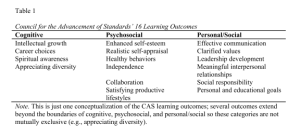Stephens, N.M., Hamedani, M.G., & Destin, M. (2014). Closing the Social-Class Achievement Gap: A Difference-Education Intervention Improves First-Generation Students’ Academic Performance and All Students’ College Transition. Psychological Science, 25(4), 943-953.
How can difference-education make a difference in the success outcomes of first-generation university freshmen? A recently published study, authored by Nicole M. Stephens, MarYam G. Hamedani and Mesmin Destin (2014), sheds light on the matter.
Stephens, Hamedani, and Destin conducted a study to determine if an educational intervention that highlights difference and demonstrates why difference matters would reduce the achievement gap between first-generation students (those whose parents do not have a four-year college education) and continuing-generation students (whom have at least one parent who has obtained a four-year college degree). Using a convenience sample to recruit first-year students and financial incentives to entice them to participate, the researchers organized two moderated panels of college seniors to share their personal stories of how they have succeeded at that university. The same group of seniors spoke at each panel and shared the same stories; the only major difference between the panels was that one panel included difference-education in the form of the panelists identifying their social-class backgrounds and then linking their stories to those backgrounds, whereas the other panel did not include such mention of experience-based difference. The group of freshmen participating in the study (which included first-generation and continuing-generation students) were randomly assigned to observe one panel or the other.
In addition to observing the panel, participating freshmen were asked immediately afterward to complete a brief survey about what they learned and how they would use that learning to advise future incoming students, and they also filmed a brief video testimonial that they were told would be used to educate the following year’s cohort of freshmen (the researchers added this wrinkle to produce the saying-is-believing effect articulated by Yeager and Walton (2011)). At the end of the year, participants also completed a survey designed to gauge their understanding of difference, how much they utilized available student resources at the college, and the success of their college transition as determined by a range of psychosocial measures such as levels of stress and student engagement.
The results are encouraging. After eliminating outliers and controlling for other factors such as SAT scores and high school GPA, the researchers found that the achievement gap (measured by year-end college GPA) between first-generation and continuing-generation students who observed the difference-education panel was virtually eliminated! In contrast, a significant gap emerged between first-generation and continuing-generation students who observed the standard panel that did not contain difference-education. The researchers also found that, although there was not a significant difference in year-end GPA between the groups of continuing-generation students who participated in the study, the group of first-generation students who observed the difference-education panel had a much higher mean GPA than the group of first-generation students who observed the standard panel. Similar patterns emerged in relation to utilization of college resources.
This seems like a sound study. The researchers’ survey design and statistical analysis controlled confounding variables, and results were statistically significant. Moreover, the researchers used multiple methods of obtaining data.
I am intrigued by this research because it relates directly to my area of inquiry. It also confirms other research articles I’ve read, my own personal observations of students, and conversations I’ve had with colleagues that support the notion that, although interventions such as academic skill development programs and financial literacy education can clearly be beneficial for first-generation students, educators must also be attuned to psychological factors such as self-efficacy and feelings of belonging and hope that can impact student success outcomes. Students can be exceptionally bright, but if they feel like they don’t belong in college, if they don’t recognize that their struggles and challenges might be related to difference in their backgrounds rather than who they are as individuals, or they don’t seek help, their chances for success are diminished.
This study also has major implications for issues of access and equity in education, which is a major national agenda. As the authors of the study wrote, the achievement gap between first-generation and continuing-generation students is well documented, and first-generation students are a large percentage of the student population. Therefore, administrators who are seeking to improve their institutional graduation rates and promote student success should be aware of this study and consider how they might use the findings in their own context.
The researchers identified several areas for future study. For example, they suggested studies on how similar interventions might affect other areas in which there are educational disparities. This study has definitely given me ideas for my own research. I would like to try a similar intervention at ASU. The key will be finding a way to do it at scale.
Additional Reference
Yeager, D.S., & Walton, G.M. (2011). Social-psychological interventions in education: They’re not magic. Review of Educational Research, 81, 267-301.
